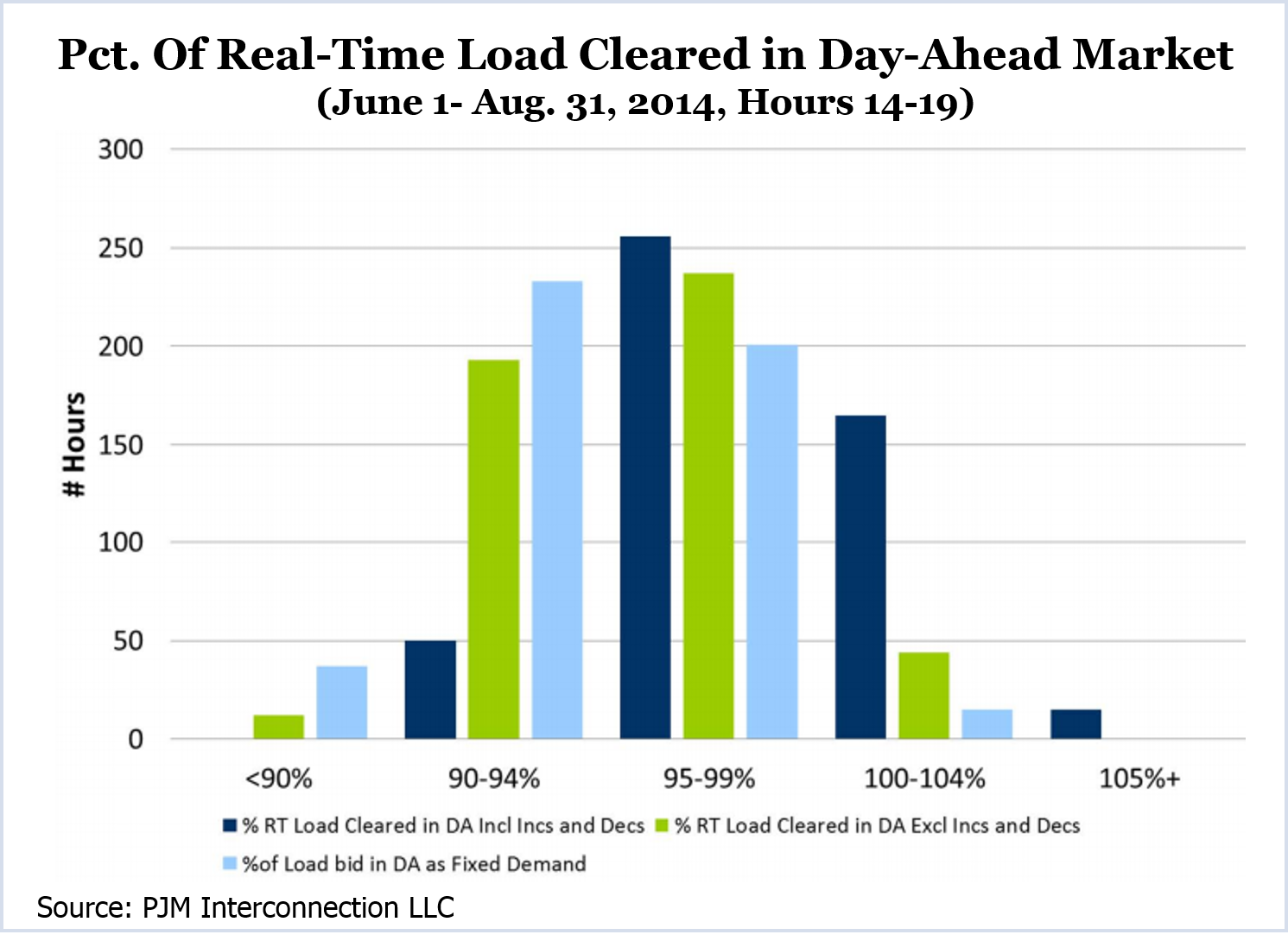
The proposal would make changes to day-ahead resource commitment and scheduling reserve requirements, as well as synchronized and primary reserve requirements. It will be brought to a vote at the next MRC meeting Oct. 30.
One change would allow PJM operators to commit long lead resources scheduled for the next operating day — those with a 36-hour notification and start time — in the DA market. Operators would have this option only during emergencies and Hot or Cold Weather Alerts. The change is intended to reduce the mismatch between DA and real-time markets and capture more of the resources meeting system needs in DA LMPs.
‘Heartburn’
A second element would increase the day-ahead scheduling reserve (DASR) requirement on these peak days when forecasted RT load exceeds submitted fixed demand.
The change is intended to ensure that PJM schedules enough capacity to meet RT load while also scheduling enough reserves to meet the average load forecast error (LFE) and forced outage rate (FOR), as well as its normal 10-minute reserve requirements. The current 6.27% DASR requirement covers only the LFE and FOR. How costs of the additional reserves would be allocated is still under discussion.
“This is a piece that really gives us heartburn,” said Susan Bruce, representing the PJM Industrial Customer Coalition. Bruce said the proposed change would work against customers that seek to keep their actual loads in line with their demand bids to avoid deviation charges.
PJM is also proposing changing the calculation of eligible reserves to more accurately reflect the dispatch capability of resources if they are needed in real time. Operators would clear reserves up to resources’ economic max rather than emergency max. They would also adjust assumptions for offline units to recognize startup and notification times. Unlike the previous changes, which are limited to emergencies and weather-related peaks, these changes would apply at all times.
Synchronized, Primary Reserve Requirements
The RTO is proposing a flexible solution for increasing synchronized and primary reserves during emergency conditions. Instead of adding 1,300 MW, as under the temporary solution approved by stakeholders May 29, PJM would increase the reserves by the additional scheduled capacity. (See PJM Reserve Proposal Gets OK for Trial Run.) Shortage pricing would be implemented through a second, lower step on the synchronized and primary reserve demand curves.
Interchange Cap
In addition to the reserve changes, members also will be asked to consider a cap on hourly interchange transactions to prevent unexpected imports from displacing scheduled resources and generating uplift.
The cap would apply during emergency conditions when operators have made firm resource commitments and anticipated interchange schedules are sufficient to meet projected load.
It would block additional spot imports and hourly non-firm point-to-point transactions once net interchange reaches the cap. Schedules with firm or network designated transmission service would not be blocked. The cap value — based on operator expectations plus a margin of 700 MW — would be implemented one to two hours before the operating hour.
Price Impact Uncertain
Lisa Morelli, who moderated the special sessions of the Market Implementation Committee that led to the proposals, said PJM has been unable to conduct a simulation to predict precisely the impact of the changes.
She said PJM had rerun some day-ahead cases under the proposed rules and found that the changes resulted in increased DASR reserve prices and small increases in day-ahead LMPs during peak hours. “Obviously it would also decrease uplift,” said Andy Ott, executive vice president for markets.
Timeline
If approved, the changes would take effect as early as this winter. Changes requiring Tariff modifications would be effective next spring.
Carl Johnson, representing the PJM Public Power Coalition, praised PJM’s crafting of proposed solutions. “PJM has really listened to our concerns,” he said.


